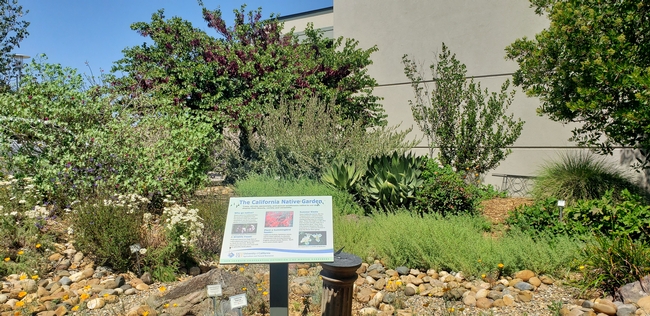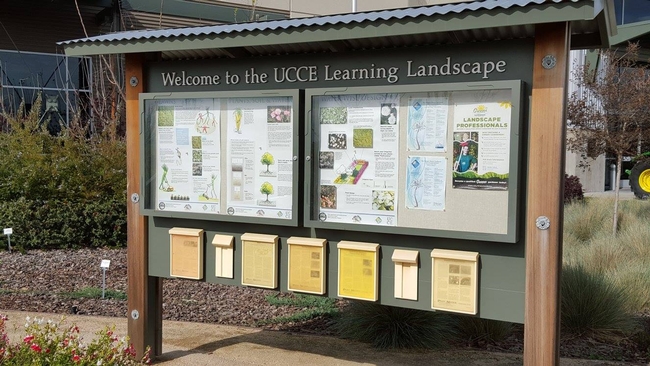
When the Robert J. Cabral Agricultural Center opened in August 2008, the southwestern corner of the landscape had been set aside for the Learning Landscape through the efforts of then-San Joaquin UCCE County Director, Mick Canevari (emeritus).
Professional landscape designers prepared plans for the Learning Landscape without consulting the SJMG's program coordinator Marcy Sousa, or the UC Horticultural Advisor Ashley Bassinger. Sousa and Bassinger were able to review and rework some of the plans via change orders before the garden's installation. They swapped out redwood trees for more climate-appropriate selections, changed paths to permeable concrete, and add crushed granite areas, in accordance with best water runoff mitigation principles and garden practices for our Mediterranean climate. It was too late in the process to swap out many of the plantings and it has taken years to replace large swaths of plantings and form it into its current state (for example, a large rosemary patch is now the Mediterranean fruit tree area).
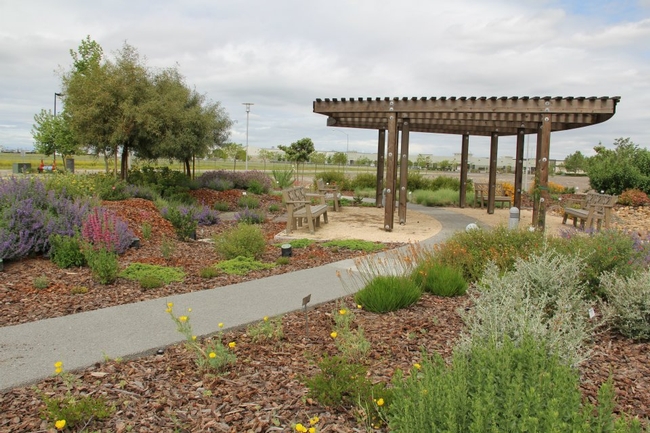
Based on the survey results and research trips, Sousa and Bassinger began adding appropriate plantings. They incorporated native, pollinator, and Mediterranean plants and trees into the landscape, and carved out an area for the Arboretum All Stars.
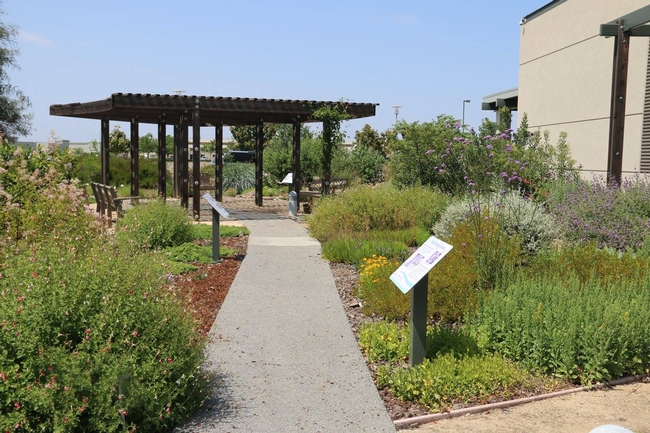
In 2010, Karrie Reid (just retired), took over as UCCE Environmental Horticultural Advisor and brought vast local expertise and structure to the gardens. Reid held meetings to brainstorm how to make the gardens more in line with MG goals. The group formalized seven themed sections; an 8th section was designated in 2021. Throughout the redesign of the gardens, Reid insisted on plantings that were truly appropriate for each themed area, suitable for the region, and with the exception of edible plants, either low or moderate water-use according to the Water Use Classification of Landscape Species.
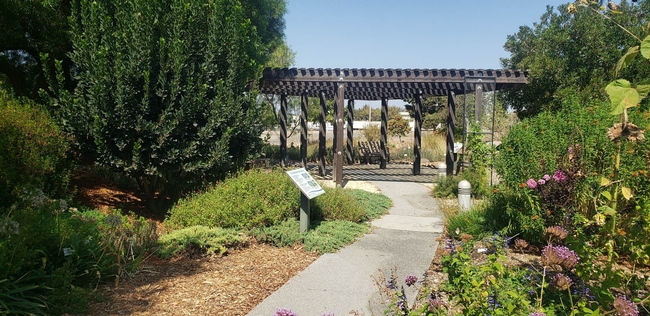
- Entry Garden
- Foliage Garden
- Arboretum All Stars
- Edibles Garden
- Pollinator Garden
- Mediterranean Garden
- California Natives
- Cutting Flowers Garden (designated in 2021)
Several MGs were instrumental in the creation of the newly formed theme gardens. The Foliage Garden was the brainchild of MGs Susan Price and Sharon McDonnell, and has remained under McDonnell's supervision since its inception. MGs Kathy Grant and Rosalee Osman proposed and created the Pollinator Garden.
Volunteers then began the heavy lifting of turning the generic landscape into the themed gardens. Excepting one Xylosma tree, all plants and trees were removed from the Foliage and Pollinator gardens and replanted with appropriate species. Decomposed granite pathways were added into those gardens to allow visitors access to the plantings, and to avoid soil compaction and trampling of plants.
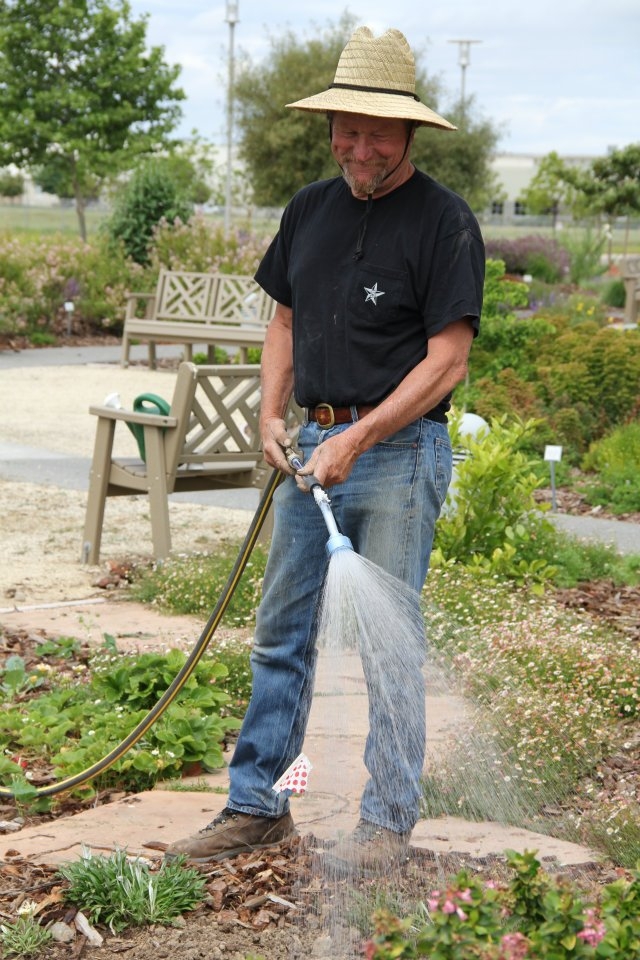
Edible landscaping was an emerging theme at the time. MG Rich Mullenbach was instrumental in removing excessive plantings, including a thorny Hawthorne tree that was a maintenance issue. He regraded the area in the Edible Landscape that became a pathway, and built the retaining walls, and volunteered many hours in the gardens.
MG Steve Sanguinetti has and continues to provide his expertise in reworking, repairing, and maintaining the irrigation system. Reid converted the irrigation in the Mediterranean Garden and Reid and Sanguinetti used the conversion of irrigation in the California Native section as an educational demonstration for MGs and the public at an Open Garden Day. Over time, Sanguinetti and Reid converted irrigation in much of the garden from point-source to modern internal drip line.
Reid also brought management structure to the gardens. She created Team Leader positions for each garden section. Team Leaders are responsible for the planning, communication, recruiting volunteers, organizing workdays, monitoring irrigation, and overall maintenance of the plants and trees within their gardens. The Team Leaders are entrusted with researching species appropriate for their garden and working with their group of volunteers to maintain each area. Several areas—the pollinator, cutting flowers, and edibles gardens change often and are reflective of the team's styles and preferences.
In addition to creating a management structure for the gardens, Reid created maps and maintenance calendars for each section and worked with the County to create signage for the overall garden and individual garden sections.
Reid's contributions and direction of the gardens for the past 12 years has been enormous. When interviewed, she mentioned,“Developing the gardens has been an ever-evolving project only accomplished through the endless hours given by MGs to this endeavor. I am incredibly proud of all their hard work, because it has created an inspirational space used frequently by the building's employees, as well as visitors to the Ag Center on business, who stroll through, take a break, or have their lunch. Additionally, it has become a resource for local landscape professionals and home gardeners who use it for ideas for regionally appropriate gardens. The signage we developed means the gardens are educational, even when we aren't on site to teach. I recently had the long-time head of marketing for Green Acres Nurseries tell me he sends clients here all the time to see our garden because of the many examples of sustainable and inspirational plant selections. It is so rewarding to see the goals we set come to life and I know it will remain a vital asset to the region.”
Master Gardeners are educated by subject matter experts in a variety of fields, including pest management, composting, plant pathology and propagation, water usage, and other subjects based upon their geographic location. They are tasked with educating the public based upon research-based practices. The Learning Landscape is a tool for MGs to learn and utilize best practices for gardening, and is one vehicle used for educating the public.
The San Joaquin County Master Gardener's program is funded and supported by AB939 and through San Joaquin County Solid Waste Division.
